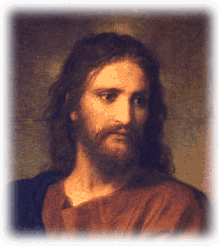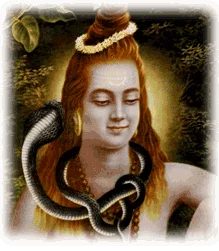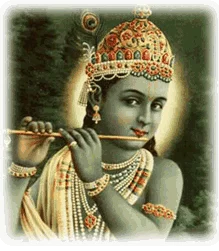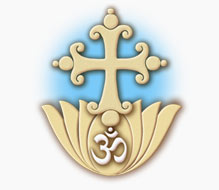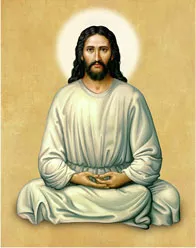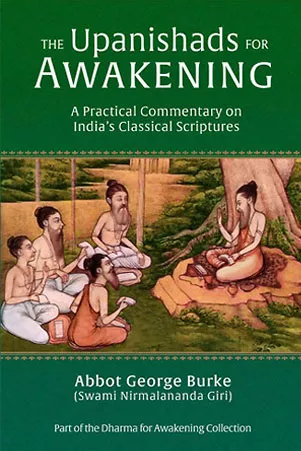
The one in the three
“Gargya then asked: ‘Master, when a man’s body sleeps, who is it within that sleeps, and who is awake, and who is dreaming? Who then experiences happiness, and with whom are all the sense organs united?’” (Prashna Upanishad 4:1).
Anyone who ponders the nature of consciousness comes to realize that there are three modes of experience: waking, dream, and dreamless sleep. All three of these states are experienced by a single witness who says: “I slept without dream,” “I slept and dreamed,” and “I am now awake.” Who is that witness? This is Gargya’s inquiry. Who is the unchanging witness of change? Who is the unseen seer? For no intelligent person of unclouded intellect can doubt the existence of such a one.
Sleep
“‘As the rays of the sun, O Gargya, when he sets,’ replied the sage, ‘gather themselves up in his disk of light, to come out again when he rises, so the senses gather themselves up in the mind, the highest of them all. Therefore when a man does not hear, see, smell, taste, touch, speak, grasp, enjoy, we say that he sleeps. Only the Pranas are then awake in the body, and the mind is led nearer to the Self.’” (Prashna Upanishad 4:2-4).
Prana is the primal life-force or vital energy. The prana that manifests in the evolving universe also manifests in the evolving body of each human being. In the body there are five basic forms of prana: 1) Prana, the prana that moves upward; 2) Apana: The prana that moves downward, producing the excretory functions in general. 3) Vyana: The prana that holds prana and apana together and produces circulation in the body. 4) Samana: The prana that carries the grosser material of food to the apana and brings the subtler material to each limb; the general force of digestion. 5) Udana: The prana which brings up or carries down what has been drunk or eaten; the general force of assimilation.
The pranas also correspond to the five elements: earth (prithvi), water (apa), fire (tejas), air (vayu), and ether (akasha). One of these five elements is the foundation for one of the five senses: earth=smell, water=taste, fire=sight, air=touch, and ether=hearing/speech.
In the waking state all the pranas are quite active and fundamentally outflowing, even those that maintain the internal functions of the body being externalized through being expended in the fulfillment of their tasks. But in sleep they withdraw into the inner reservoirs of the body and the state of sleep occurs. On the subtlest energy level they withdraw into the manas, the energy field we call the mind. For the mind is the highest sense, being the sum and goal of them all. It is not amiss to say that the senses serve the mind–at least when the right order prevails. Otherwise they drag the mind helplessly along addicting and enslaving it. Breaking the web of this addiction-slavery is then impossible without the practice of pranayama–control and refinement of the pranas. For this reason all viable spiritual traditions have methods that involve breath–the most objective manifestation of prana–to some degree. (Again, see The Breath of Life and Breath Meditation For Christians.)
When the pranas withdraw into the mind, their distracting activities lessen–unless they occupy and overwhelm the mind with constant and vivid dreaming. When/If the mind is thus granted a reprieve from their clamor, it begins to sense what is behind it, just as it is behind the senses. The mind is the witness of the senses, but it is also itself witnessed. That ultimate witness is the Self. Therefore the upanishad says that in sleep “the mind is led nearer to the Self.”
Dreams and dreamlessness
Where do dreams come from? Gargya has not asked, but Pippalada tells him: “While in dream, the mind revives its past impressions. Whatever it has seen, it sees again; whatever it has heard, it hears again; whatever it has enjoyed in various countries and in various quarters of the earth, it enjoys again. What has been seen and not seen, heard and not heard, enjoyed and not enjoyed, both the real and the unreal, it sees; yea, it sees all” (Prashna Upanishad 4:5). Everyone is creative in the dream state, though some are definitely better writer/directors of their inner movies than others. He continues: “When the mind is overpowered by deep slumber, it dreams no more. It rests happily in the body” (Prashna Upanishad 4:6).
From the very first yogis have spoken of the importance of the dreamless, deep sleep state they call sushupti. This is because in dreamless sleep we are aware of awareness itself with no interference from the senses. We are aware deep within ourselves, aware of our nature as simple, pure consciousness. Dreamless sleep is also proof that the Self exists. For although no objects are presented to the mind, there is a witness of that non-experiencing. Otherwise we would not awaken and say: “I slept but had no dreams at all.” Instead we would not know any time had passed, would not even know that we had been asleep. That witness which cognizes the waking, dream, and dreamless states is the Atman itself.
There is a higher form “when sushupti [the dreamless sleep state] is rightly cognized [experienced] while conscious,” says the Shandilya Upanishad. In that state we are “asleep while awake” and are fully conscious of the fact. This is very near the actual experience of the Self and partakes of that experience to some degree, the happiness and ease we feel being a touch of the joy (ananda) that is the nature of the Self. It is extremely valuable because it shows us that when all sensory experience is gone beyond there yet remains the truth of ourselves in the form of pure, unconditioned consciousness that is the Self.
In deep meditation we enter this state intentionally and begin working our inner transformation from this center.
To the Self
“As birds, my friend, fly to a tree for rest, even so do all these things fly to the Self: Earth and its peculiar essence, water and its peculiar essence, fire and its peculiar essence, air and its peculiar essence, ether and its peculiar essence, the eye and what it sees, the ear and what it hears, the nose and what it smells, the tongue and what it tastes, the skin and what it touches, the voice and what it speaks, the hands and what they grasp, the feet and what they walk on, the mind and what it perceives, the intellect and what it understands, the ego and what it appropriates, the heart and what it loves, light and what it illumines, energy and what it binds together” (Prashna Upanishad 4:7, 8).
They “fly to the Self” because the Self is their origin. They are returning to their source after ages upon ages of separation in relative existence/experience.
“For verily it is the Self that sees, hears, smells, tastes, thinks, knows, acts. He is Brahman, whose essence is knowledge. He is the immutable Self, the Supreme” (Prashna Upanishad 4:9). The Self is the Experiencer in all beings, the knower of all things, and the doer of all acts. This points out the fact that Maya–illusion–is the misperception of things, not perception itself. Also, sense experience, thought, and actions are NOT illusions. It is our misunderstanding of them that is illusion. The Self is real and its experiences are real. It is true that they are purely mental in nature, but is the mind not real? Again, it is a matter of how we perceive.
The Self is a wave of the ocean of Brahman, the Absolute, whose nature is Consciousness. The Self is immutable, and beyond it there is nothing else, for in essence it is one with Brahman, the ultimate Being. Yet, the Self needs to attain itself, needs to attain the consciousness of its Being which is Brahman. Therefore the sage says further:
The end result
“He who knows the immutable, the pure, the shadowless, the bodiless, the colorless, attains to Brahman, O my friend. Such an one becomes all-knowing, and he dwells in all beings. Of him it is written: ‘He who knows that immutable Self, wherein live the mind, the senses, the pranas, the elements–verily such an one knows all things, and realizes the Self in all.’” (Prashna Upanishad 4:10, 11).
This is most important, for it indicates that first we know the Self–the individual Self, the jivatman–and then we are enabled to know the Supreme Self, the Paramatman: Brahman. And the Self we will know is itself:
Immutable. Eternally changeless, incapable of being either diminished or increased, for it is one with the Infinite.
Pure. Ever only itself, never really being influenced or changed by any thing whatsoever. Untainted by any contact, for it is untouchable.
Shadowless. The Self is Pure Light within which there is no shadow of darkness or differentiation. It is always exactly what it is.
Bodiless. It is perfectly non-dual. It is neither inside or outside of any thing. It cannot be contained. It is absolutely one, having nothing appended to it or necessary to it.
Colorless. It has no “qualities” or “characteristics” but is always I AM. The three gunas are not present in it, nor are any gradations of any kind. It is indescribable. All we can really say about it is what it is not.
All of these terms indicate that the Self is the same as Brahman. And the Self that knows its Self, Brahman “wherein live the mind, the senses, the pranas, the elements,” does in truth come to know all things and the Self in all things.
Omniscience and omnipresence are experienced by that liberated spirit who knows its oneness with The All.
Read the next article in the Upanishads for Awakening: Meditation on Om
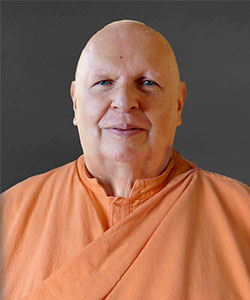
Swami Nirmalananda Giri (Abbot George Burke)
Swami Nirmalananda Giri, founder of Light of the Spirit Monastery, has spent over six decades immersed in the study and practice of Yoga and and the spiritual traditions of East and West. He is the author of more than 30 books on meditation, practical spiritual life and Sanatana Dharma.
Learn more »

